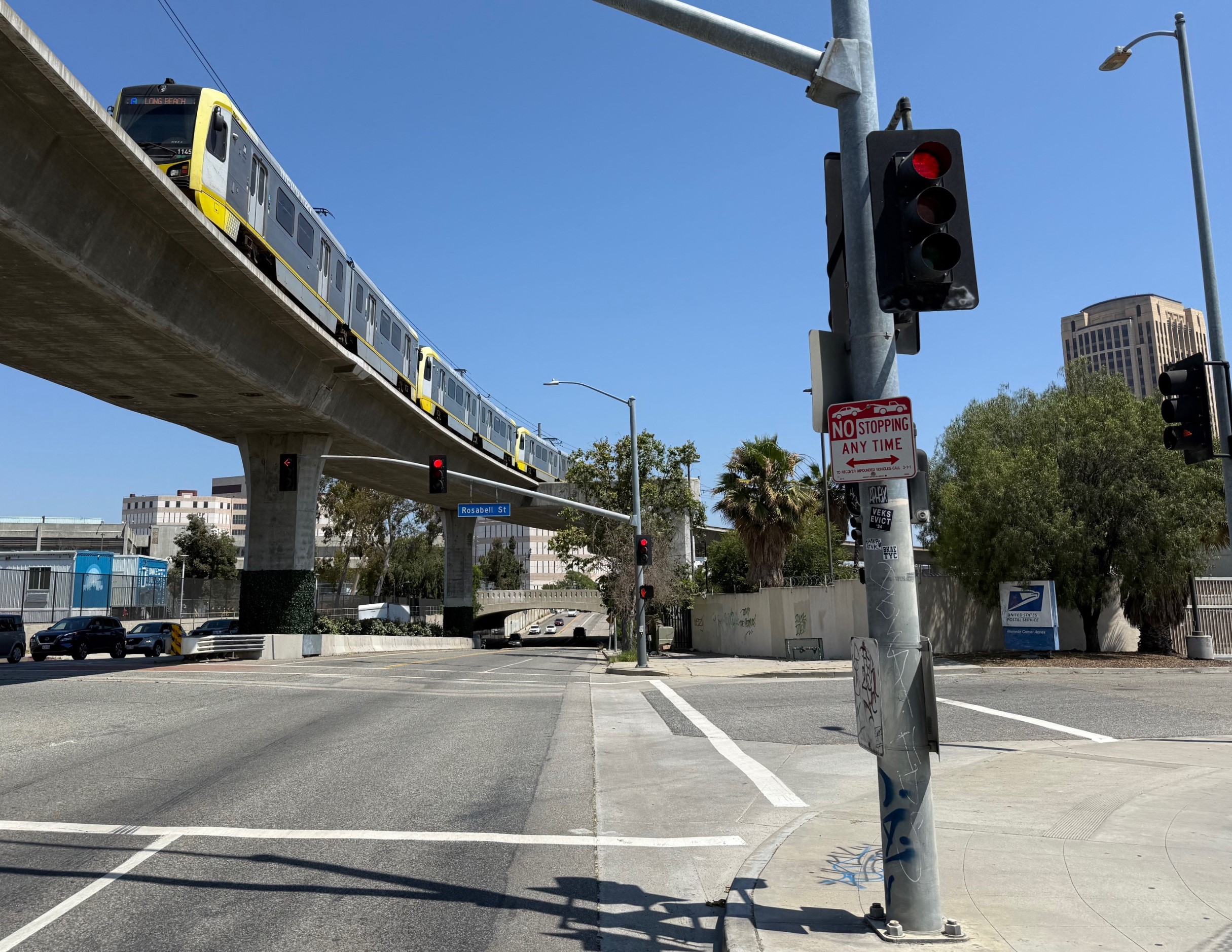The Los Angeles City Council is in the midst of deliberations over the city's fiscal year 2017-2018 budget. Yesterday the city's budget committee spent nearly two hours discussing the Department of Transportation (LADOT). Councilmembers questioned and pressed LADOT General Manager Seleta Reynolds on numerous topics from speed limits to Vision Zero to bike-share. The committee requested numerous reports to guide further budget decisions.
The initial overture of budget negotiations comes from the executive branch. In late April, Mayor Eric Garcetti proposed an overall $9.2 billion city budget. This year's budget features two new transportation revenue sources not available in earlier years:
- Metro's Measure M countywide sales tax local return funds - expected to be approximately $60 million annually for L.A. City
- California's S.B. 1 which includes a gas tax, and some other vehicle fees - expected to be approximately $80 million annually for L.A. City, though the gas tax increase does not start until January 2018, so in the FY 2017-18 budget the S.B. 1 total is less than half of the full amount.
The mayor's budget summary highlights the following livability spending:
- $16.7 million for Vision Zero - mostly this goes to LADOT, but it includes $1.5 million for LAPD enforcement
- $3.6 million for the Great Streets Initiative
- $14 million for DASH circulator bus expansion
- $31 million for sidewalk repair - much larger than past budgets and legally mandated by the settlement in the Willits case
- $30 million for repaving the worst streets, with a focus on the Vision Zero High Injury Network - funding from from Measure M and S.B. 1
Though $16.7 million is much more than the current year's nearly $4 million Vision Zero spending, livability advocates quickly responded that the mayor's proposal does not go far enough. Reynolds has estimated that a Vision Zero budget of roughly $80 million would be needed for L.A. to meet the interim goal of a 20 percent reduction for 2017 included in Garcetti's Vision Zero directive. $16.7 million remains far short of the proposed 60+ percent Measure M set-aside approved by the city's Transportation Committee last month; that set-aside would total roughly $40+ million annually.
Investing in Place, the L.A. County Bicycle Coalition, L.A. Walks and others have called for the city to increase Vision Zero funding. L.A. Walks issued an alert urging city leaders to up Vision Zero to the full $80 million.
LACBC's Mobility Monday call to action pushes for a meaningful increase to Vision Zero, plus additional funding for LADOT's bicycle program and for anti-displacement measures, with active transportation spending prioritized in low-income communities and communities of color.
L.A. traffic fatalities for all modes. Pedestrians continue to be highly over-representedAt yesterday's budget committee hearing (available online) advocates plead their case, urging that the city commit sufficient Vision Zero funding to match approved plans and directives.
In the exchange between LADOT and the committee, several noteworthy topics were addressed:
Traffic Fatalities Are Getting Worse: What the LACBC is calling a "public health crisis" was confirmed by Reynolds. L.A. traffic violence is getting worse. In 2016, 260 people (more than half on foot or bike) were killed in traffic collisions, an increase of almost 43 percent over 2015. Reynolds stated that preliminary data from the current year looks similarly bad, with fatalities up "another 30 percent." Though all of the committee expressed generalized support for Vision Zero, Councilmember Mike Bonin stressed that Vision Zero is a "moral responsibility" and one of the city's most important programs. Further he expressed that if hundreds of people were dying from gunshots, the council would fully fund programs to end the deaths.
Vision Zero and Repaving: The Mayor's office has promoted the efficiency of tying together street repaving work and Vision Zero improvements, which should, in theory, save money: re-do the street once and upgrade striping, signals, even sidewalks, etc. all at one time. Though Garcetti staff see this efficiency as a positive, several budget committee members expressed skepticism. Councilmember Nury Martinez stated that she "doesn't want LADOT to chase BSS [Bureau of Street Services - responsible for repaving]." Reynolds and Garcetti deputy chief of staff Matt Szabo expressed optimism, pledging that the new $30 million High Injury Network resurfacing program would follow the lead of the new $16.7 million Vision Zero program. Relatedly, Bonin stressed that additional Vision Zero funding would be needed for improvements to HIN
Speed Limits: One way to reduce dangerous speeding is police enforcement of speed limits. Due to state speed trap laws, the city is forced to survey speeds and revise/increase speed limits to match prevailing speeds. Reynolds reported that LADOT has completed half of the needed speed surveys on HIN streets, and the department expects to have all the surveys done by the end of this calendar year. After surveys are done, state mandated speed limit increases must be approved by the city Transportation Commission, council Transportation Committee, and full city council. Reynolds expects a packet of HIN speed limit increases to make their way through the approval process in a month or two.
Bike-Share: Councilmember Bob Blumenfield asked about L.A.'s nearly year-old bike-share system getting less usage than many other cities. Reynolds described the fares as "too expensive or too confusing" for first-time riders. Reynolds also stated that LADOT has been reviewing locations and is in the process of relocating several under-performing ones. Reynolds also stated that LADOT is preparing a proposal for future expansion, including within the downtown area.
Budget hearings continue for various other departments this week. The council then weighs various reports and can propose budget modifications before approving a final 2017-18 budget.







